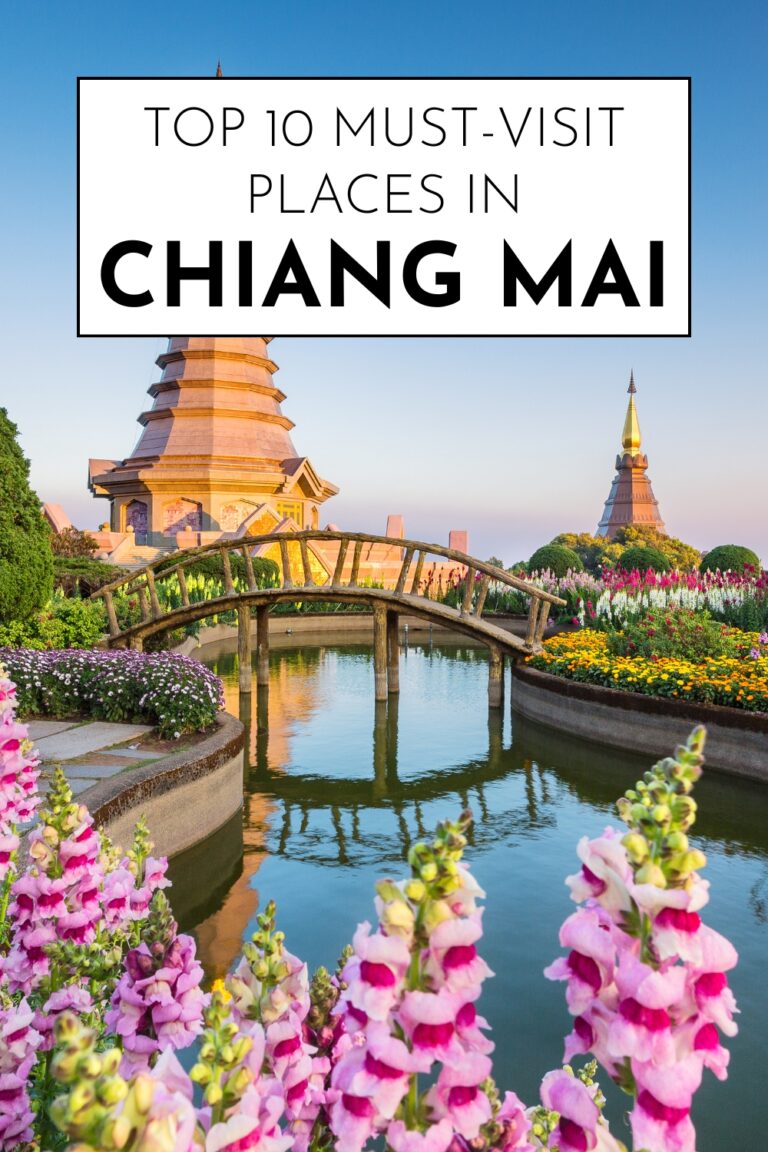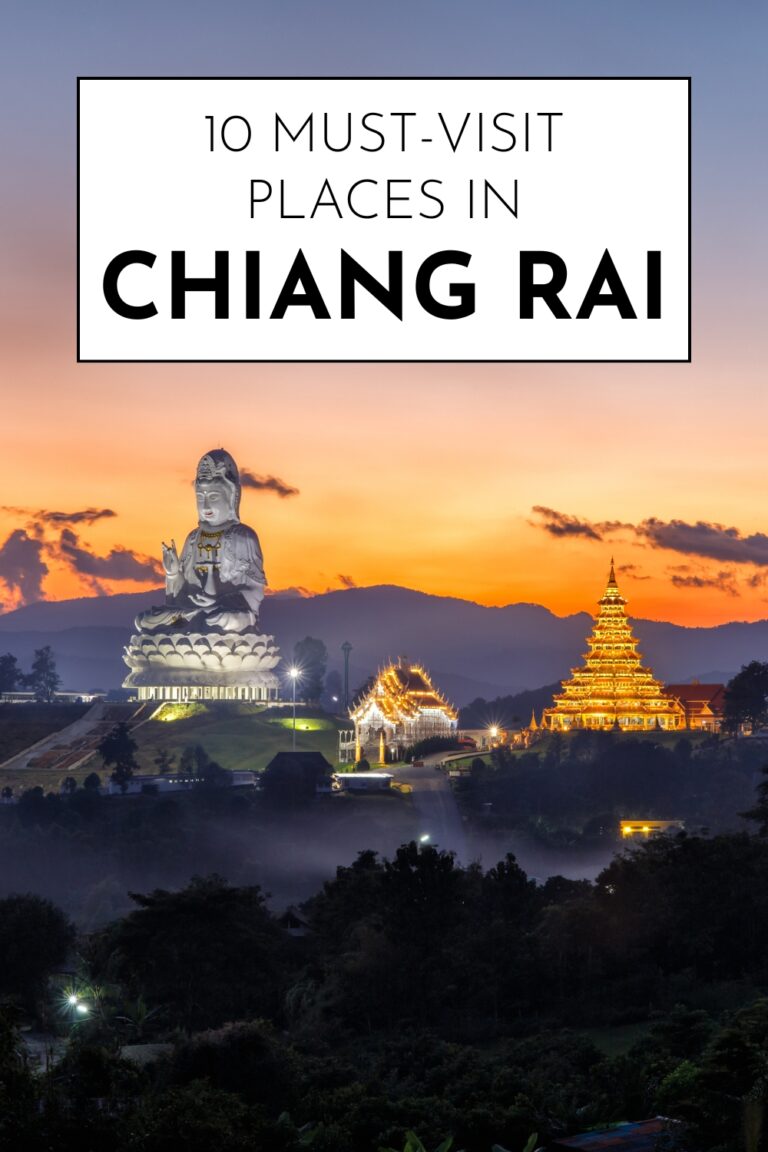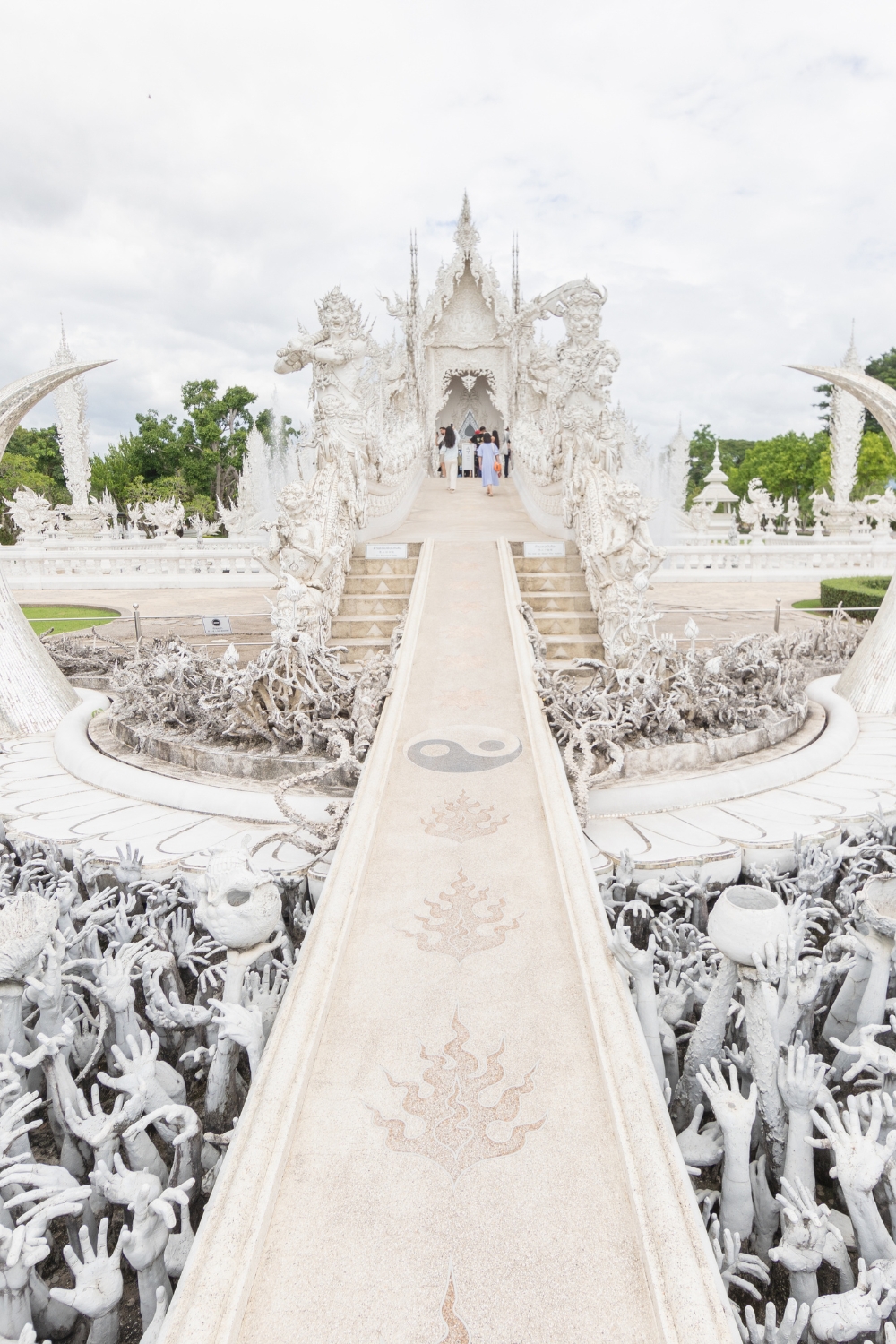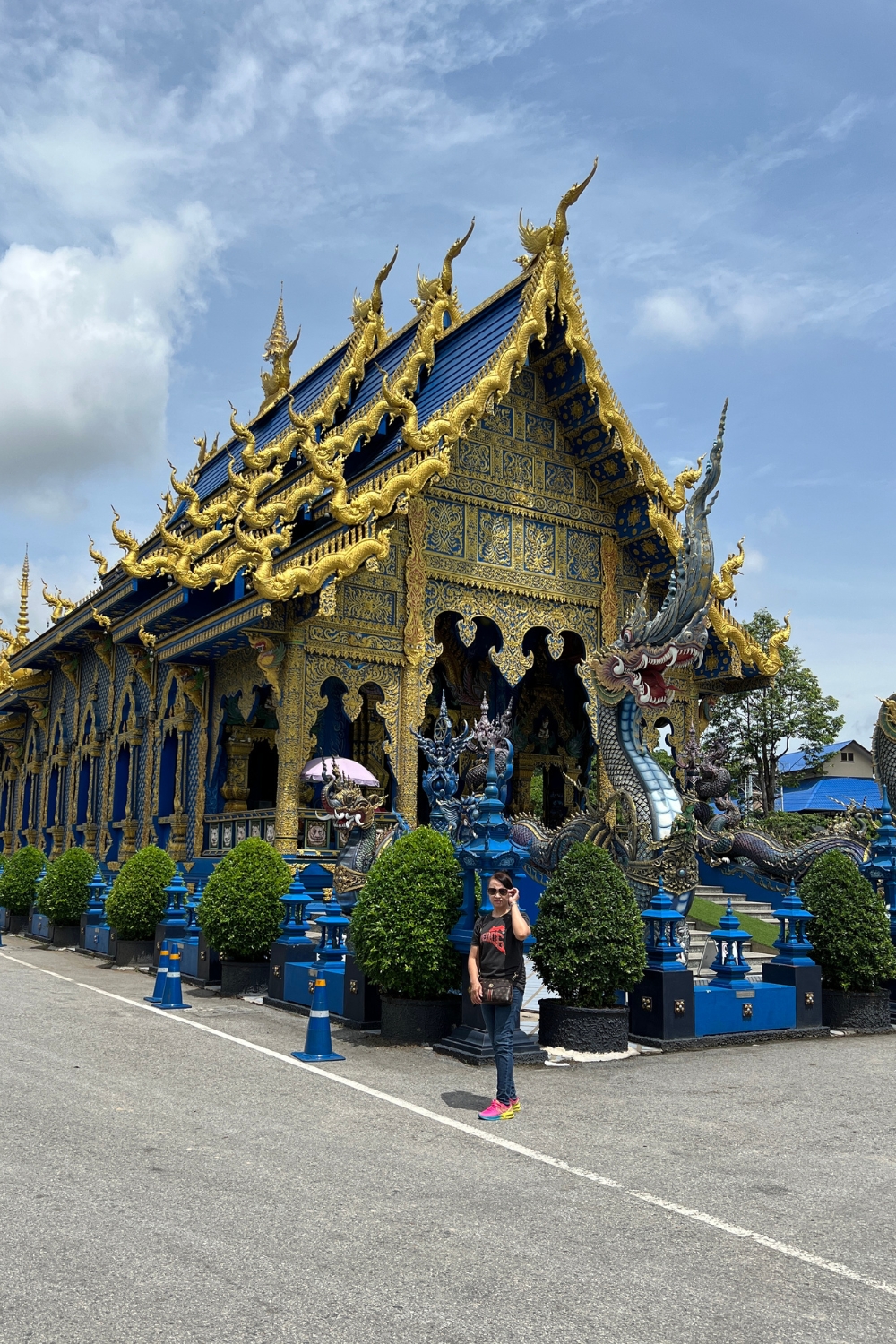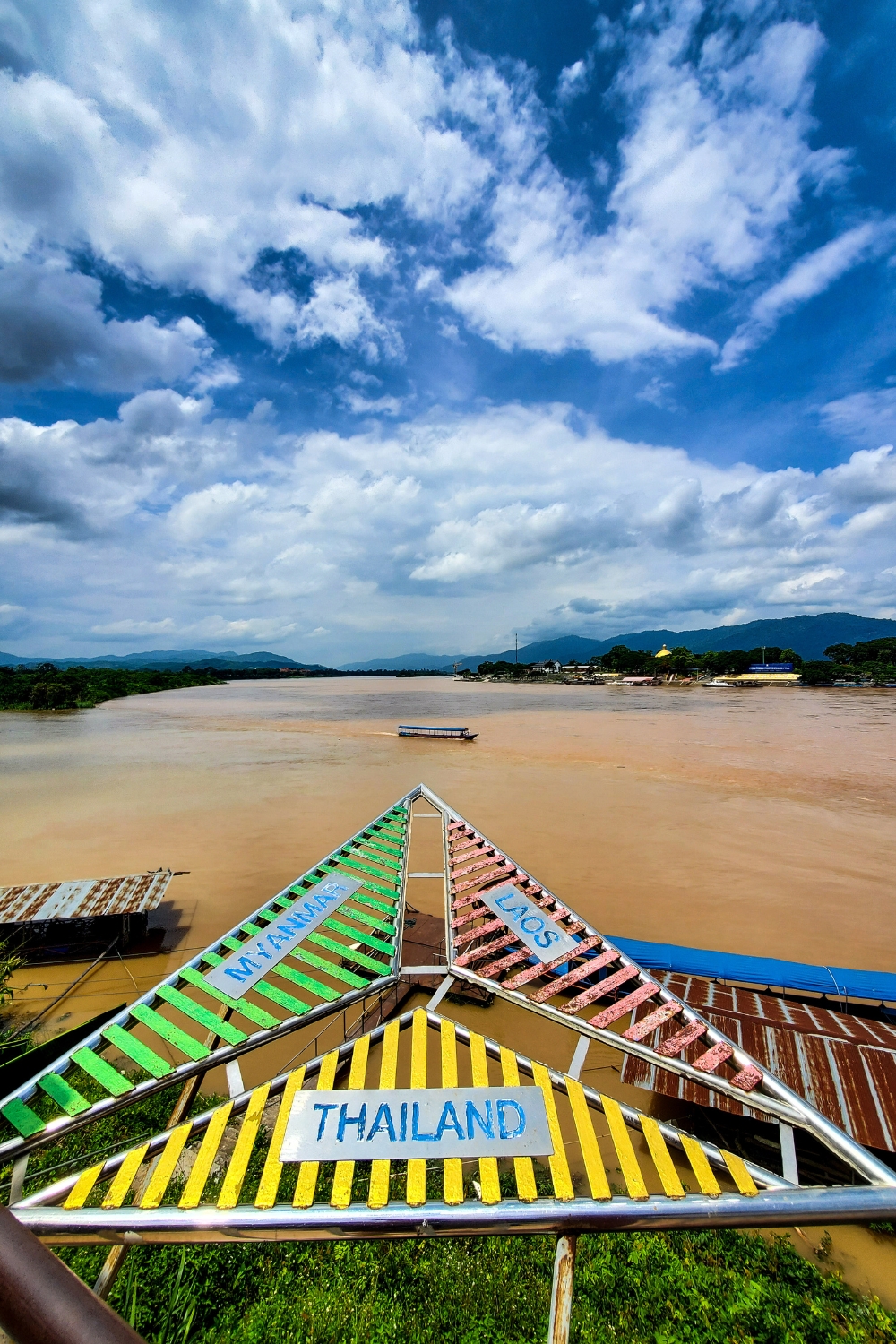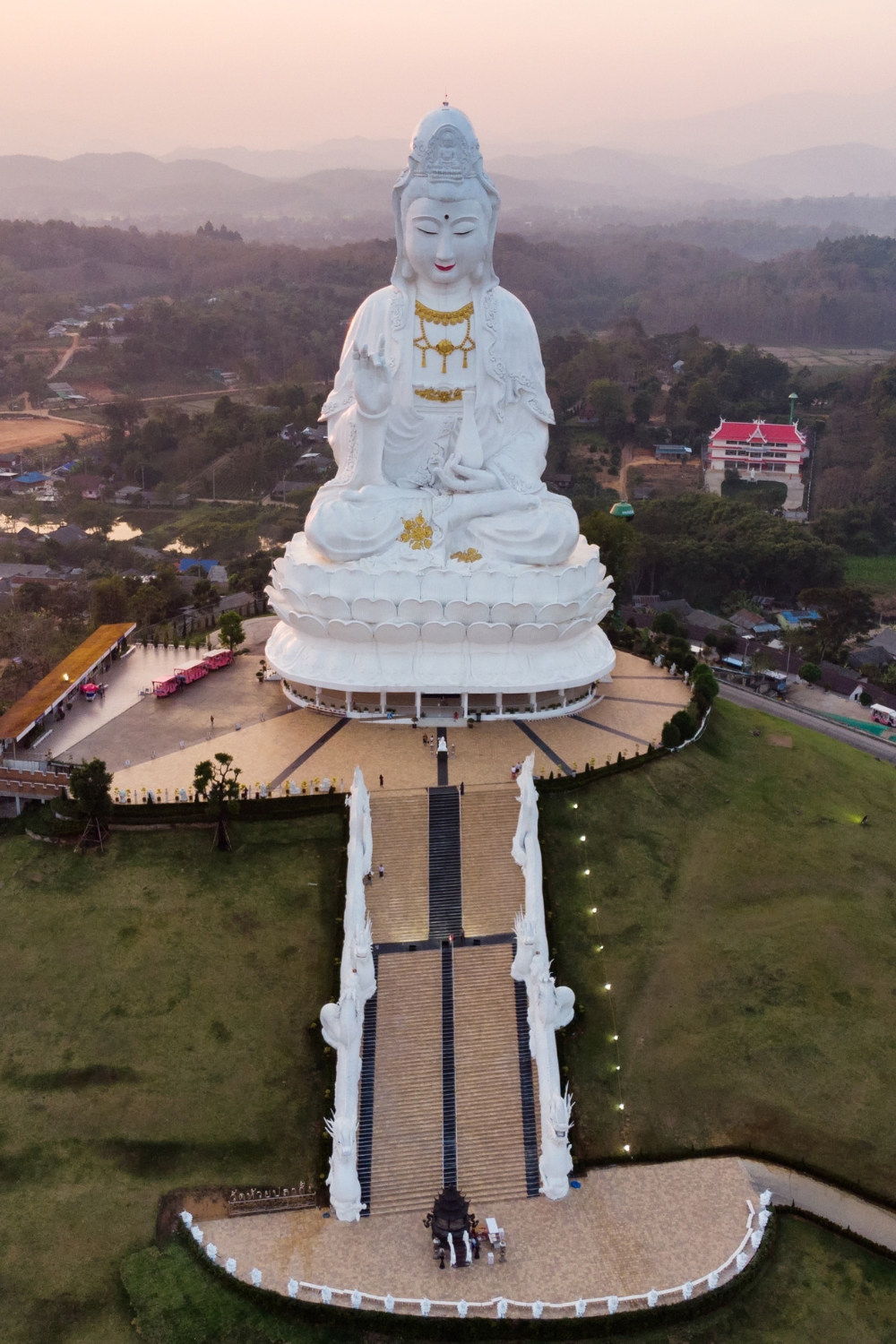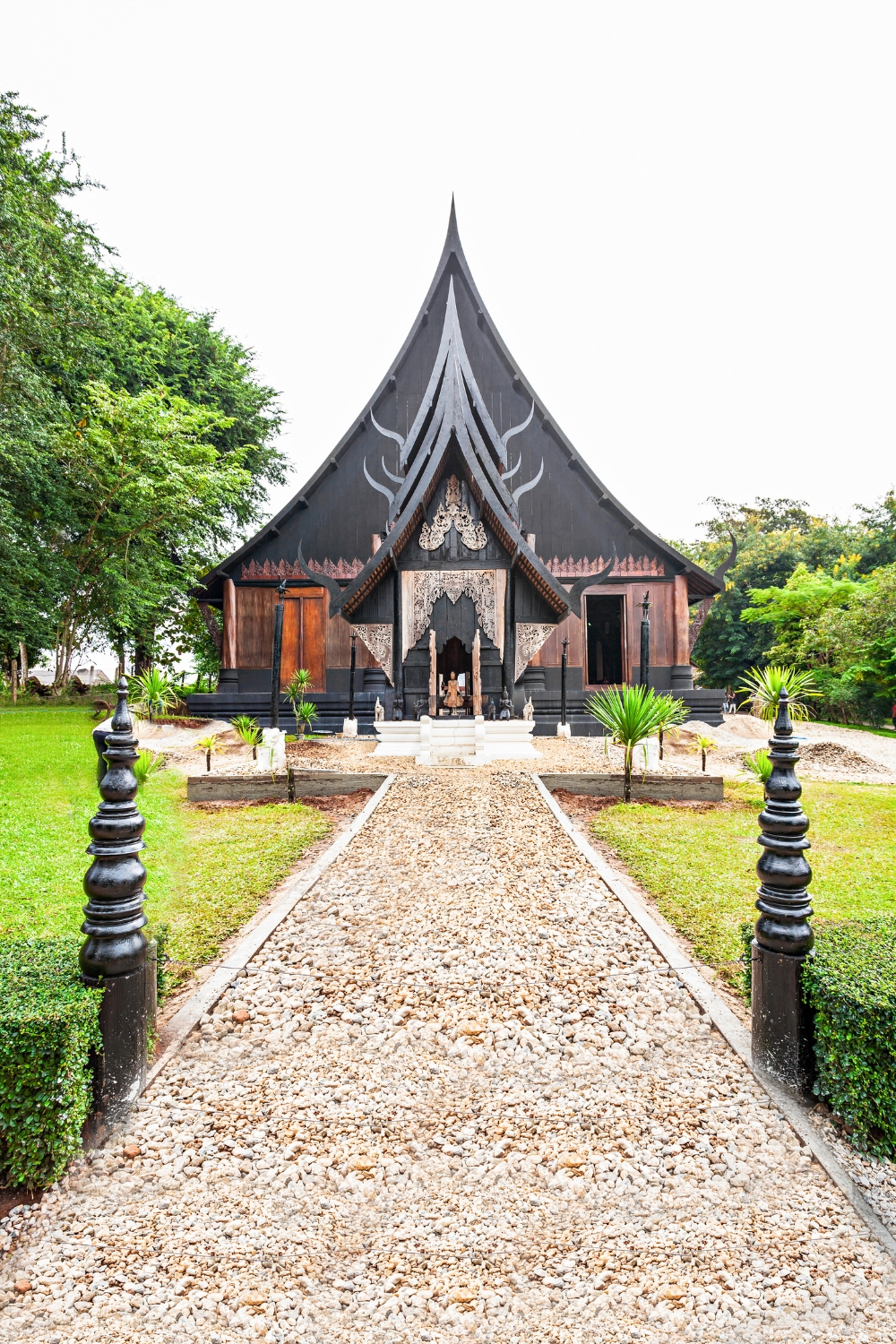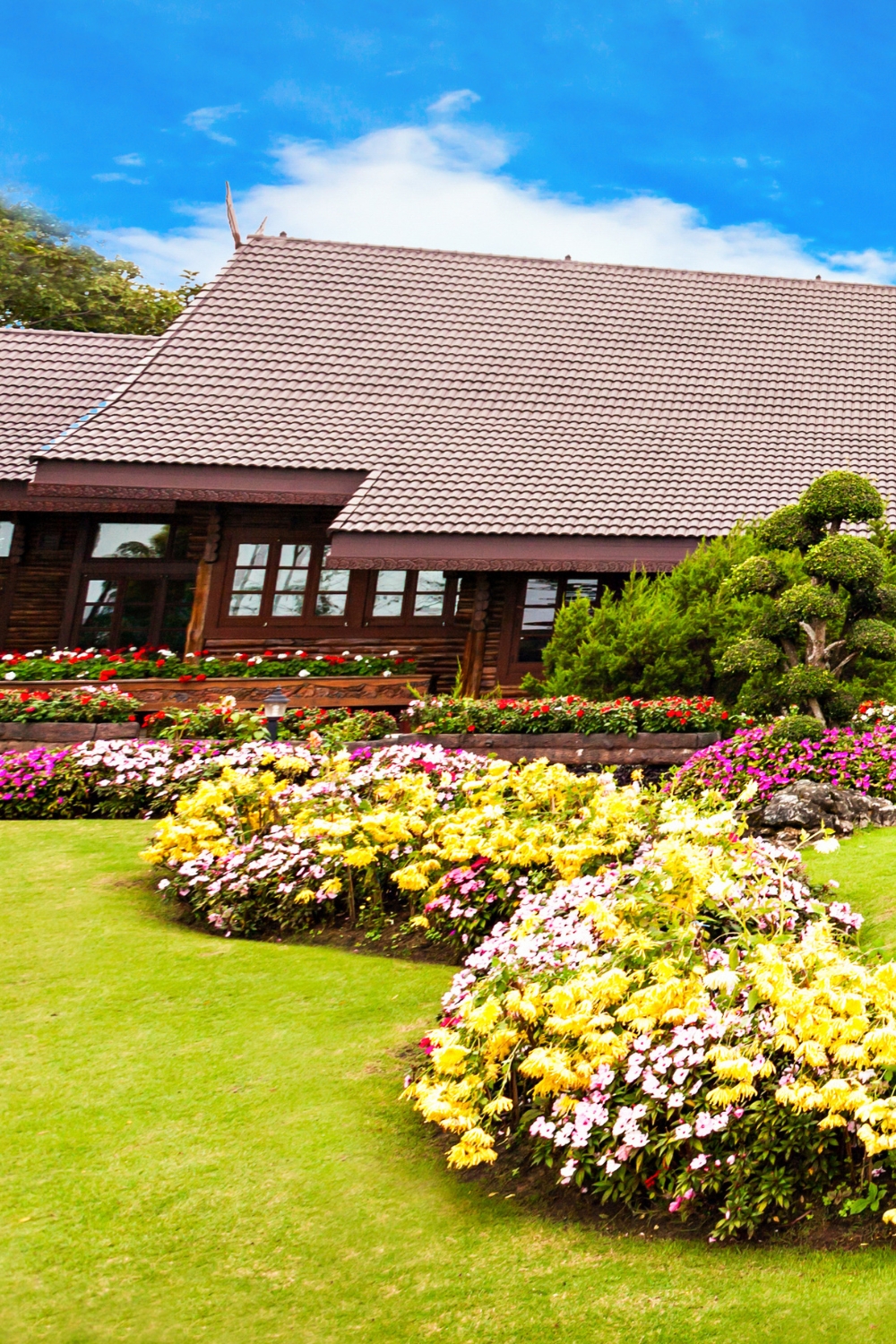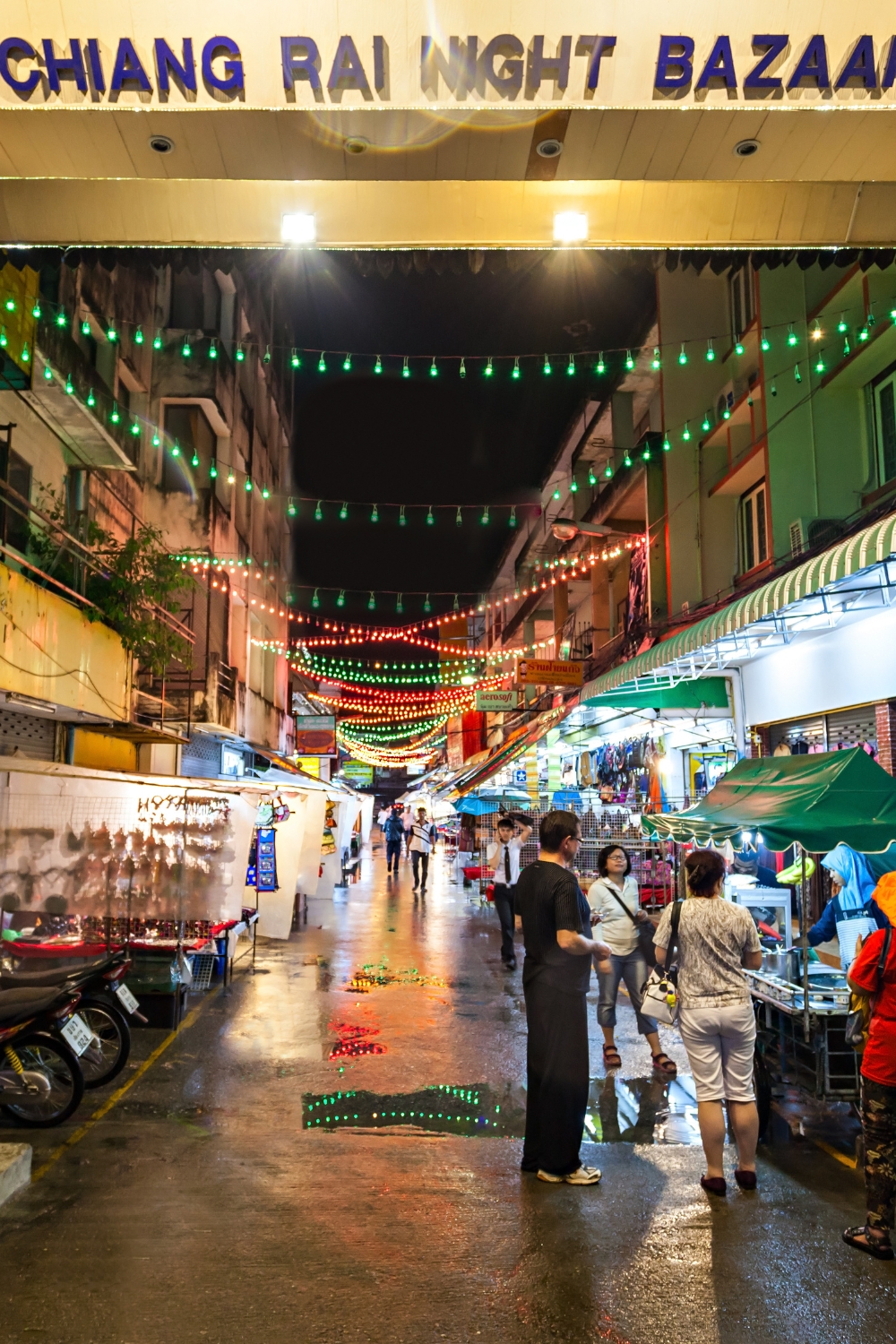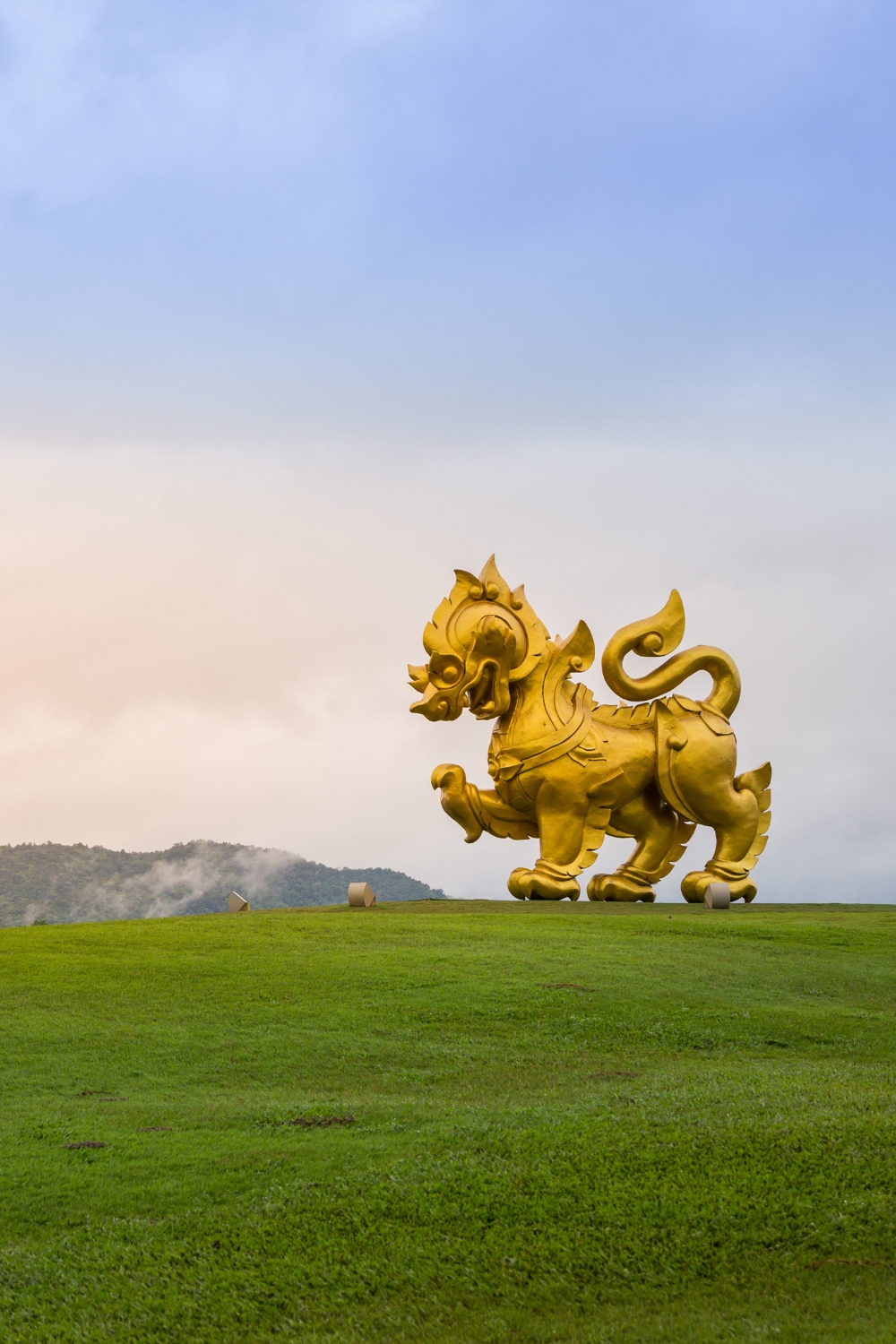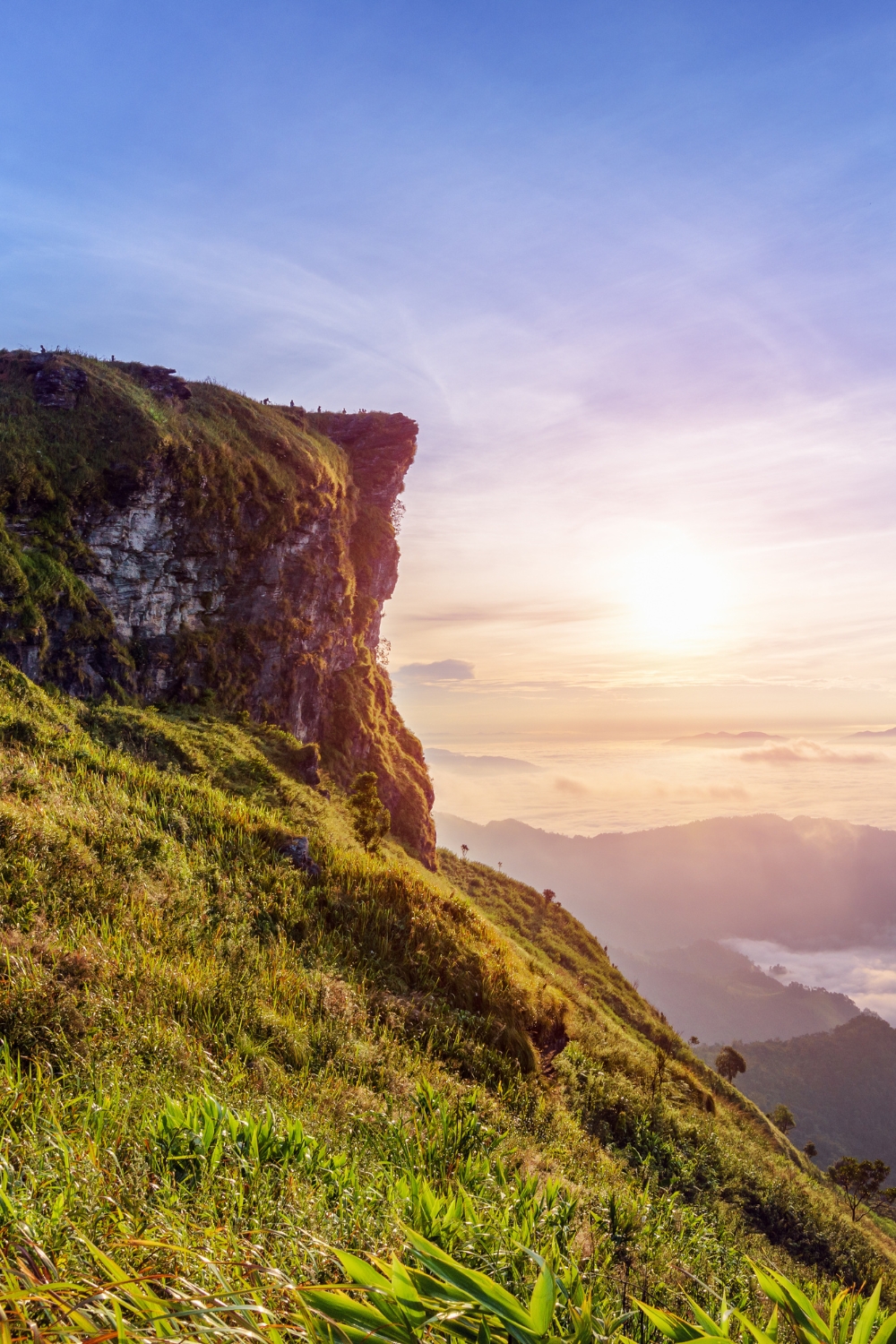Chiang Mai, the cultural heart of Northern Thailand, captivates visitors with its perfect blend of ancient traditions and modern charm. This enchanting city, nestled in the mountainous region near the Myanmar and Laos borders, offers an incredible tapestry of golden temples, bustling night markets, lush mountains, and rich cultural experiences.
Known as the “Rose of the North,” Chiang Mai serves as Thailand’s spiritual and cultural center, home to over 300 temples and countless festivals throughout the year. Whether you’re seeking spiritual enlightenment, culinary adventures, outdoor thrills, or artistic inspiration, this northern gem delivers unforgettable experiences at every turn.
From sacred temple complexes that have stood for centuries to vibrant markets where locals and travelers mingle, Chiang Mai presents a slower, more authentic side of Thailand that keeps visitors coming back for more.
Let’s explore the ten most spectacular destinations that make Chiang Mai an essential stop on any Southeast Asian adventure.
1. Wat Phra That Doi Suthep – The Sacred Mountain Temple
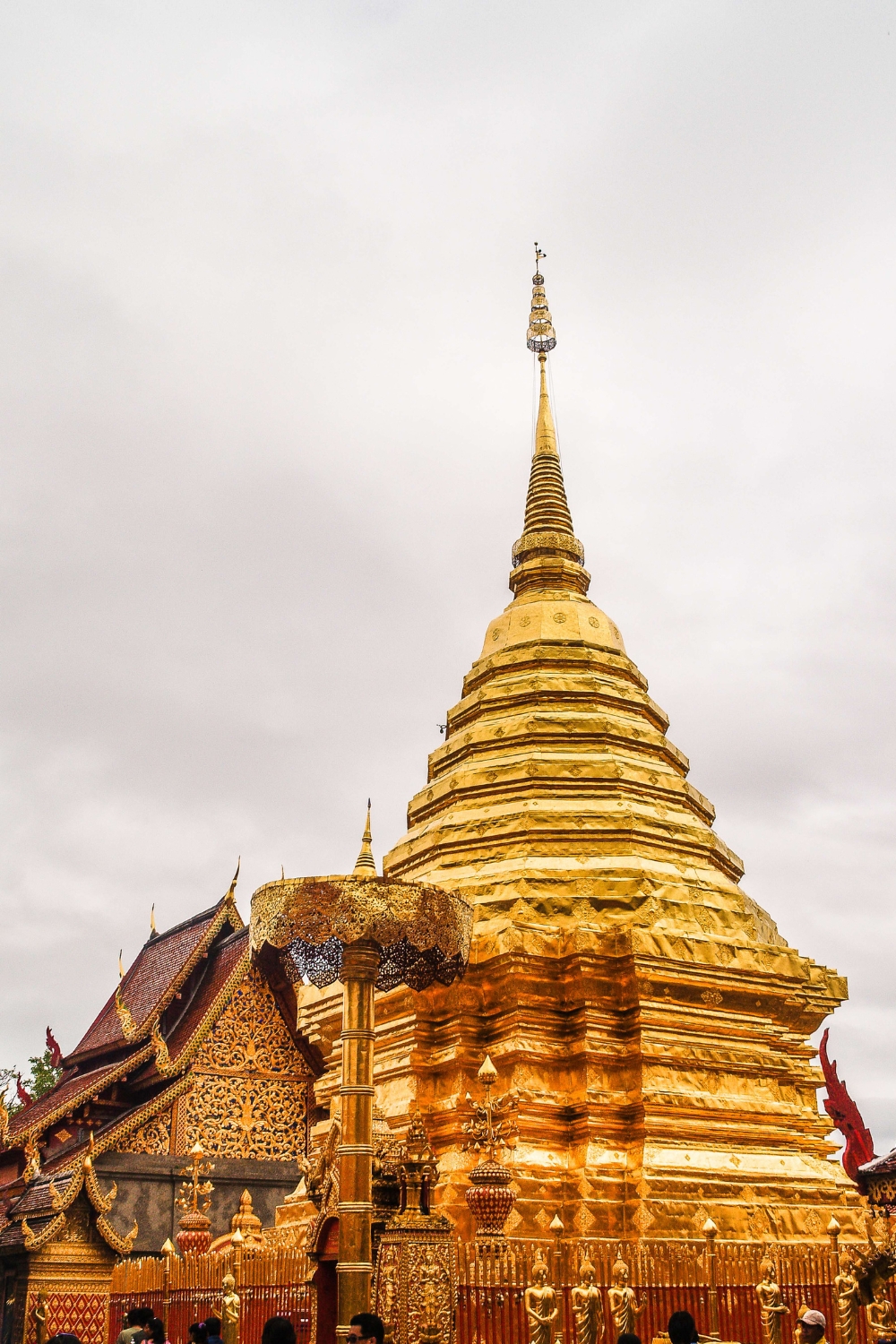
Perched 1,073 meters above sea level on Doi Suthep mountain, this golden temple complex stands as Chiang Mai’s most iconic landmark and spiritual symbol. The temple’s gleaming chedi (pagoda) can be seen from virtually anywhere in the city, serving as a constant reminder of the region’s deep Buddhist heritage.
Legendary Origins and Spiritual Significance
According to local legend, a white elephant carrying a Buddha relic climbed this mountain, trumpeted three times, turned around three times, and died on this exact spot. This divine sign led to the construction of Wat Phra That Doi Suthep in 1383.
The temple houses sacred relics of Buddha, making it one of Northern Thailand’s most important pilgrimage sites. Devotees and tourists alike climb the 306-step Naga staircase (or take the cable car) to reach the golden chedi that dominates the temple complex.
Breathtaking Views and Temple Activities
Beyond its spiritual importance, the temple offers panoramic views of Chiang Mai city spread out below. Early morning and late afternoon visits provide the most spectacular lighting for photography and the most comfortable temperatures for exploration.
Best time to visit: Early morning (6-8 AM) or late afternoon (4-6 PM)
Key highlights: Golden chedi, panoramic city views, Naga staircase, sacred relics
Entry fee: 30 THB for foreigners
2. Chiang Mai Old City – Historic Cultural Quarter

The Old City represents the heart of historical Chiang Mai, enclosed within ancient walls and moats that date back to 1296. This compact square kilometer contains the highest concentration of temples, traditional architecture, and cultural sites in the entire city.
Ancient Walls and Temple Treasures
The Old City’s red brick walls and gates tell the story of the ancient Lanna Kingdom. Within these boundaries, you’ll discover some of Chiang Mai’s most beautiful temples, including Wat Chedi Luang with its massive ruined pagoda, and Wat Phra Singh, home to the revered Phra Singh Buddha image.
Walking through the narrow lanes reveals traditional wooden houses, hidden courtyards, and small shrines that locals still use for daily prayers. The area maintains its historical character while housing modern cafes, boutique hotels, and art galleries.
Cultural Immersion and Exploration
The Old City serves as the perfect base for exploring Chiang Mai on foot or by bicycle. Temple-hopping becomes easy when you can walk between sacred sites in just minutes. Sunday evenings transform the main street into the famous Walking Street Market.
Must-see temples: Wat Chedi Luang, Wat Phra Singh, Wat Chiang Man
Walking distance: Entire Old City walkable in 2-3 hours
Best exploration method: On foot or bicycle
3. Night Bazaar and Markets – Shopping and Street Food Paradise
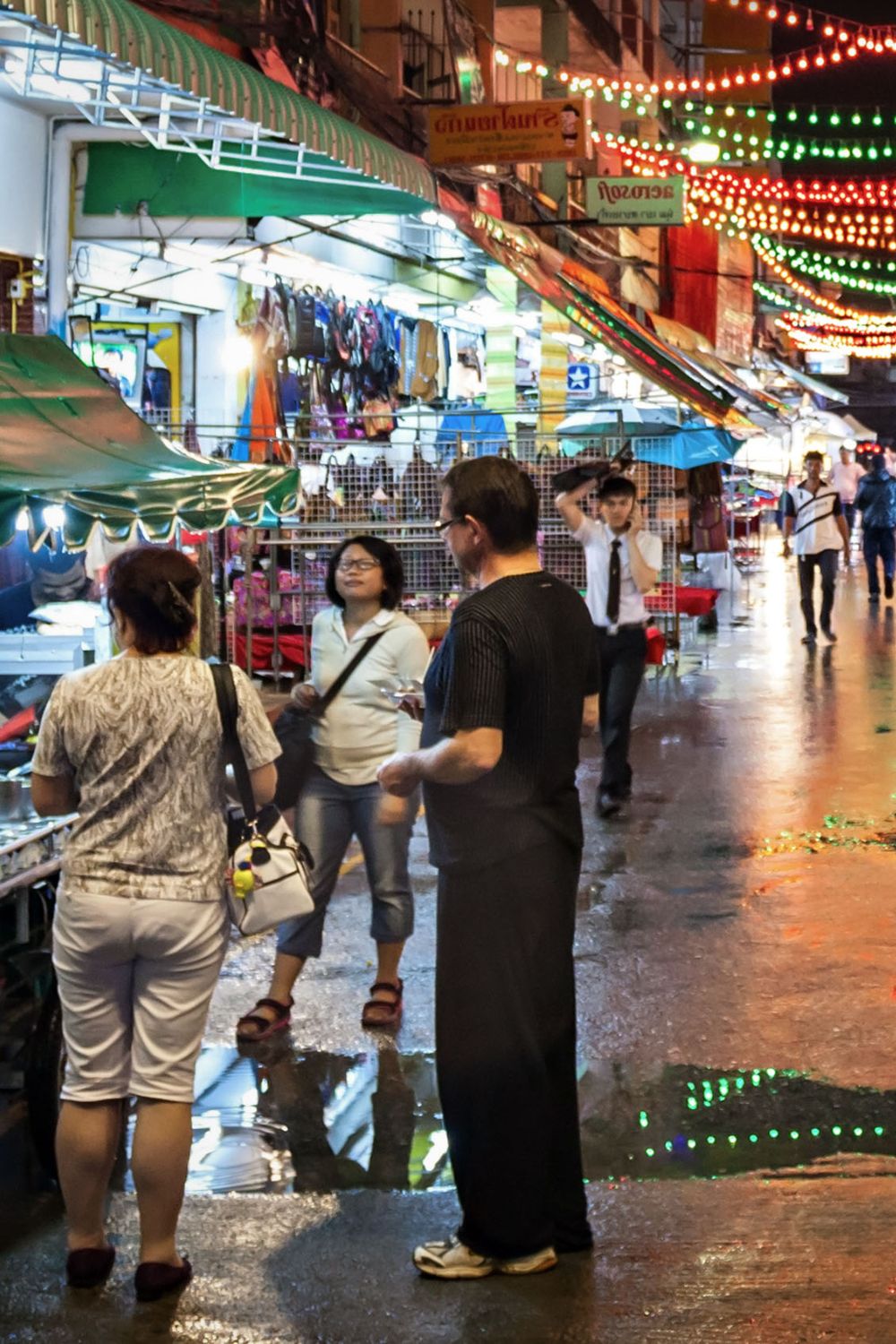
Chiang Mai’s night markets create a sensory explosion of colors, aromas, and sounds that define the city’s evening culture. These bustling markets offer everything from handcrafted souvenirs to authentic street food, providing insight into local life and traditions.
Sunday Walking Street Market (Ratchadamnoen Road)
Every Sunday evening, the main road through the Old City transforms into Northern Thailand’s most famous market. Local artisans display handmade crafts, textiles, artwork, and traditional products along the historic street lined with ancient temples.
The market stretches for over a kilometer, with side streets branching off to create a maze of shopping opportunities. Traditional Lanna music performances and temple courtyards serving food add cultural depth to the shopping experience.
Saturday Night Market (Wua Lai Road)
The Saturday market on Wua Lai Road offers a more local atmosphere with fewer tourists and more authentic products. This market specializes in silverware, traditional crafts, and local textiles, reflecting the neighborhood’s history as the silversmith quarter.
Street food stalls serve Northern Thai specialties like khao soi (curry noodles), sai ua (Northern sausage), and sticky rice with mango. The relaxed atmosphere allows for better interaction with local vendors and artisans.
Best markets: Sunday Walking Street, Saturday Night Market, Night Bazaar
Operating hours: Typically 6 PM – 11 PM
Bargaining: Expected and welcomed
4. Elephant Nature Park – Ethical Elephant Sanctuary
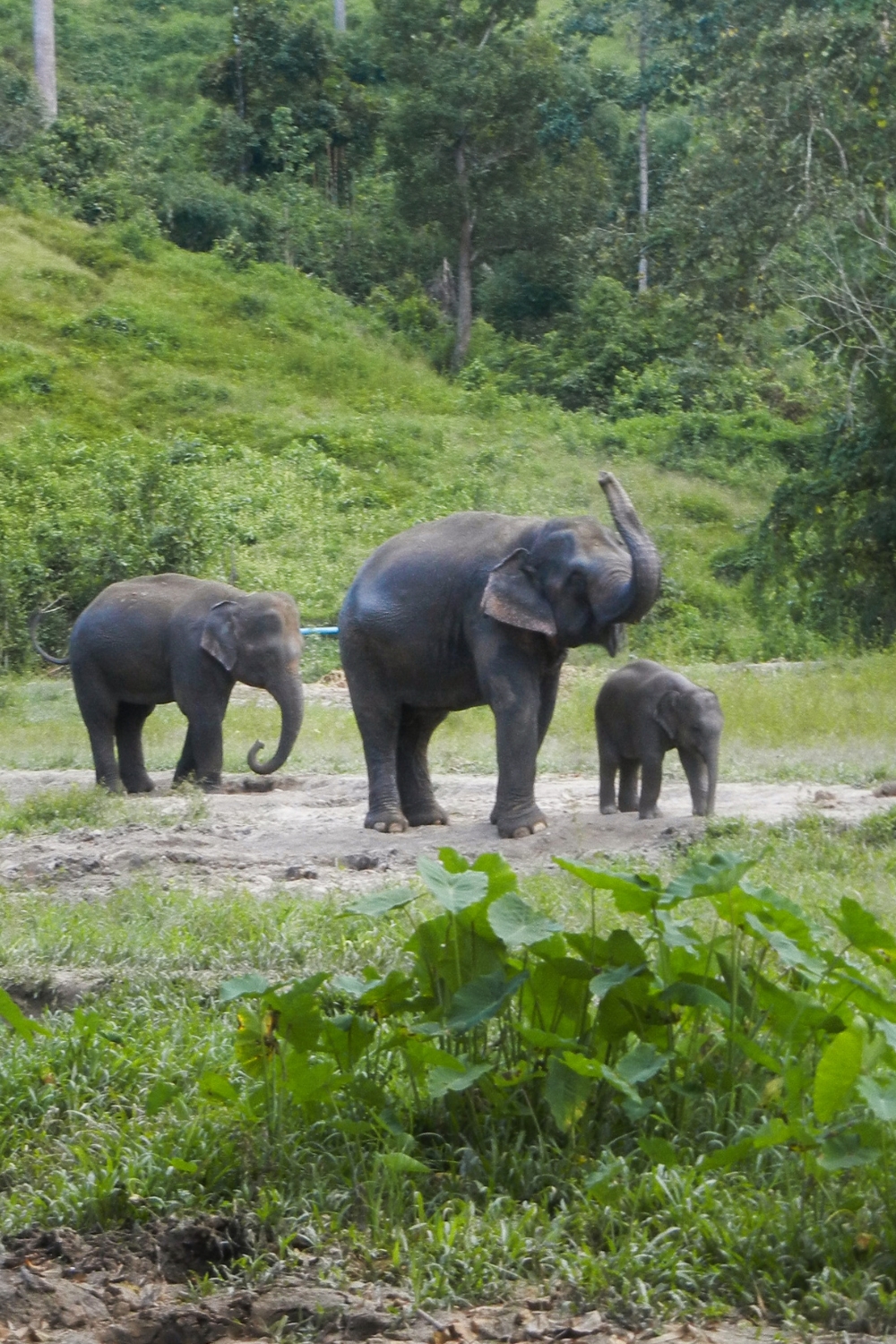
Elephant Nature Park represents a revolutionary approach to elephant tourism, focusing on rescue, rehabilitation, and ethical treatment of these magnificent creatures. Located 60 kilometers north of Chiang Mai, this sanctuary provides a natural home for elephants rescued from tourism, logging, and street begging.
Ethical Tourism and Elephant Welfare
Founded by Sangduen “Lek” Chailert, the park houses over 70 elephants in a natural environment where they can roam freely, socialize, and exhibit natural behaviors. Visitors observe elephants without riding them, instead learning about their individual stories and participating in feeding and bathing activities.
The park’s approach has inspired similar sanctuaries throughout Thailand and has changed how many tourists view elephant tourism. Educational programs teach visitors about elephant behavior, the problems with traditional elephant tourism, and conservation efforts.
Full-Day and Overnight Experiences
Day visits include transportation from Chiang Mai, guided tours, elephant feeding, and traditional Thai lunch. Overnight programs offer deeper immersion, including evening observations and more extensive learning opportunities about elephant care and behavior.
The park also rescues dogs, cats, and other animals, creating a comprehensive animal welfare facility that demonstrates sustainable and ethical tourism practices.
Visit options: Day trips, overnight stays, volunteer programs
Booking: Advanced reservation required
Transportation: Included from Chiang Mai hotels
Philosophy: No riding, no shows, natural interaction only
5. Doi Inthanon National Park – Thailand’s Highest Peak
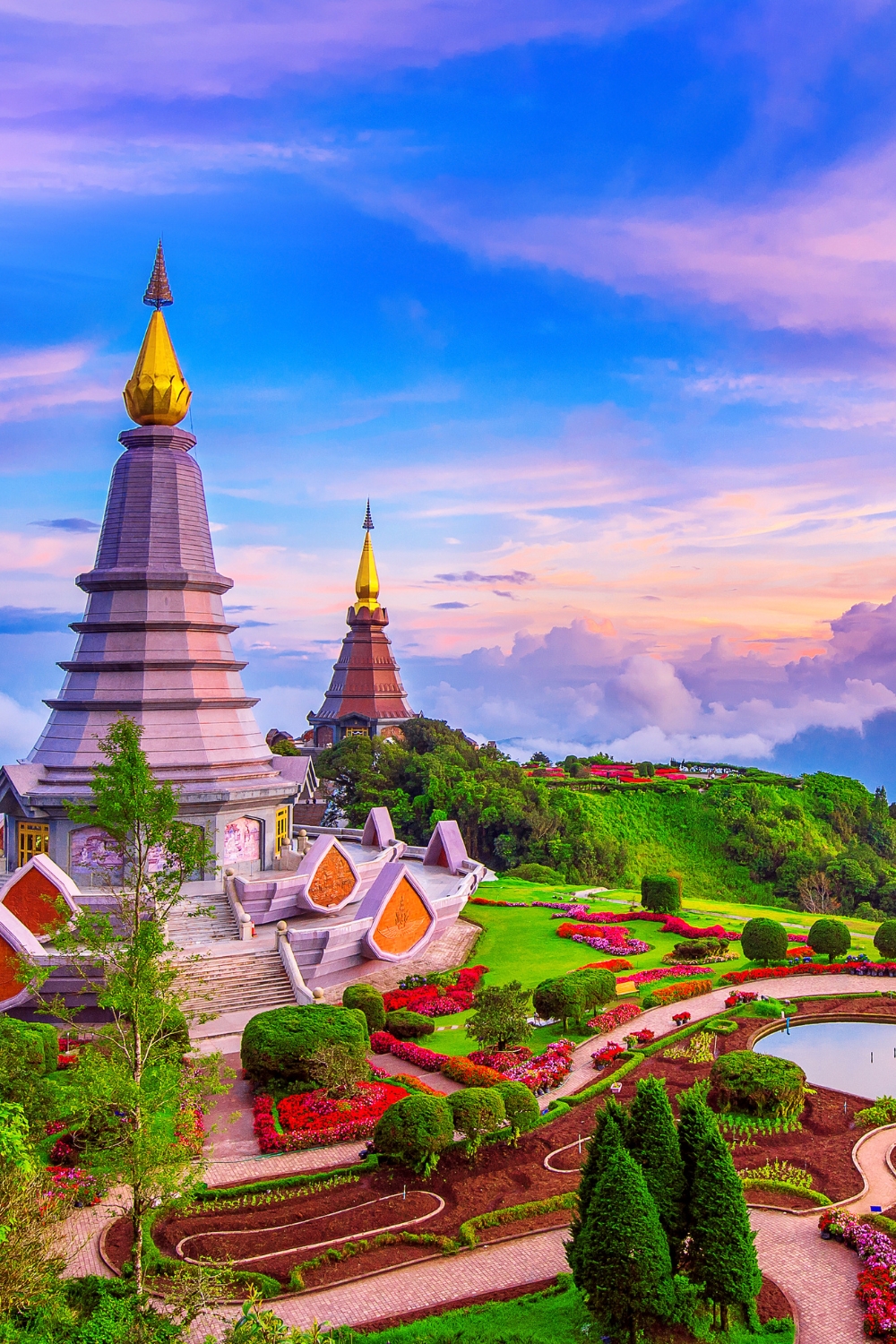
Doi Inthanon National Park encompasses Thailand’s highest mountain at 2,565 meters above sea level, earning it the nickname “The Roof of Thailand.” This mountainous park offers cooler temperatures, diverse ecosystems, and stunning natural beauty just 90 minutes from Chiang Mai.
Mountain Peaks and Natural Wonders
The park’s diverse elevation creates multiple climate zones, from tropical lowlands to temperate mountain forests. Over 400 bird species call the park home, making it one of Thailand’s premier birdwatching destinations.
The summit area features two pagodas built to honor King Bhumibol and Queen Sirikit, surrounded by landscaped gardens that bloom with colorful flowers year-round. The cooler mountain climate supports plants and flowers that don’t grow elsewhere in Thailand.
Waterfalls and Hiking Trails
Multiple waterfalls cascade through the park, including the spectacular Wachirathan Falls and the multi-tiered Mae Klang Falls. Hiking trails range from easy walks around the summit to challenging treks through primary forest.
The park’s trail system leads to hill tribe villages, coffee plantations, and scenic viewpoints. Early morning visits often reward hikers with sea of mist views over the surrounding valleys.
Key attractions: Thailand’s highest peak, pagodas, waterfalls, bird watching
Best time to visit: November to February (cool and dry)
Activities: Hiking, bird watching, photography, cultural visits
Distance from Chiang Mai: 90 kilometers (1.5-2 hours)
6. Wat Chedi Luang – Ancient Temple Complex
Wat Chedi Luang stands as one of Chiang Mai’s most historically significant temples, dominated by the ruins of a massive 14th-century pagoda that once reached 80 meters in height. This temple complex showcases classic Lanna architecture and houses important religious artifacts.
Historical Significance and Architecture
Built in 1391, the temple’s main chedi was the tallest structure in ancient Chiang Mai until an earthquake in 1545 reduced it to its current 60-meter height. The impressive ruins still dominate the temple grounds, creating one of Thailand’s most photogenic religious sites.
The temple once housed the famous Emerald Buddha (now in Bangkok’s Wat Phra Kaew) and remains an active center of Buddhist worship. The combination of ancient ruins and active temple life provides visitors with both historical insight and spiritual atmosphere.
Monk Chats and Cultural Learning
Wat Chedi Luang offers daily “Monk Chat” programs where visitors can practice English with Buddhist monks while learning about Buddhism, Thai culture, and temple life. These informal conversations provide rare opportunities for cultural exchange and spiritual discussion.
The temple grounds include several smaller buildings, spirit houses, and a large sacred tree believed to protect the city. Evening visits offer particularly atmospheric lighting of the ancient chedi.
Historical period: Built 1391, earthquake damage 1545
Main feature: 60-meter ruined chedi
Cultural programs: Daily monk chats
Location: Heart of Old City
7. Bua Thong Sticky Waterfalls – Natural Wonder

The Bua Thong Waterfalls, known as the “Sticky Waterfalls,” offer one of Northern Thailand’s most unique natural experiences. Located 60 kilometers north of Chiang Mai, these limestone waterfalls allow visitors to climb directly up the waterfall surface without slipping.
Unique Limestone Formation
The waterfall’s limestone surface creates a naturally grippy texture that provides excellent traction even when wet. Mineral deposits from the water create this unique surface that feels sticky but doesn’t leave any residue on skin or clothing.
The multi-tiered waterfall flows through tropical forest, creating several pools and climbing sections of varying difficulty. The limestone formations also create small caves and interesting rock formations throughout the area.
Natural Swimming and Adventure
Visitors can climb up and down the waterfall freely, jump into natural pools, and explore the surrounding forest trails. The unique experience of walking up a flowing waterfall attracts adventurous travelers seeking something different from typical tourist attractions.
The site remains relatively undeveloped, maintaining its natural character while providing basic facilities. The forest setting offers shade and cooler temperatures compared to Chiang Mai city.
Unique feature: Climbable limestone waterfall surface
Activities: Waterfall climbing, swimming, forest hiking
Distance: 60 kilometers north of Chiang Mai
Best time: Year-round, but less crowded on weekdays
8. Wat Phra Singh – Golden Temple Masterpiece
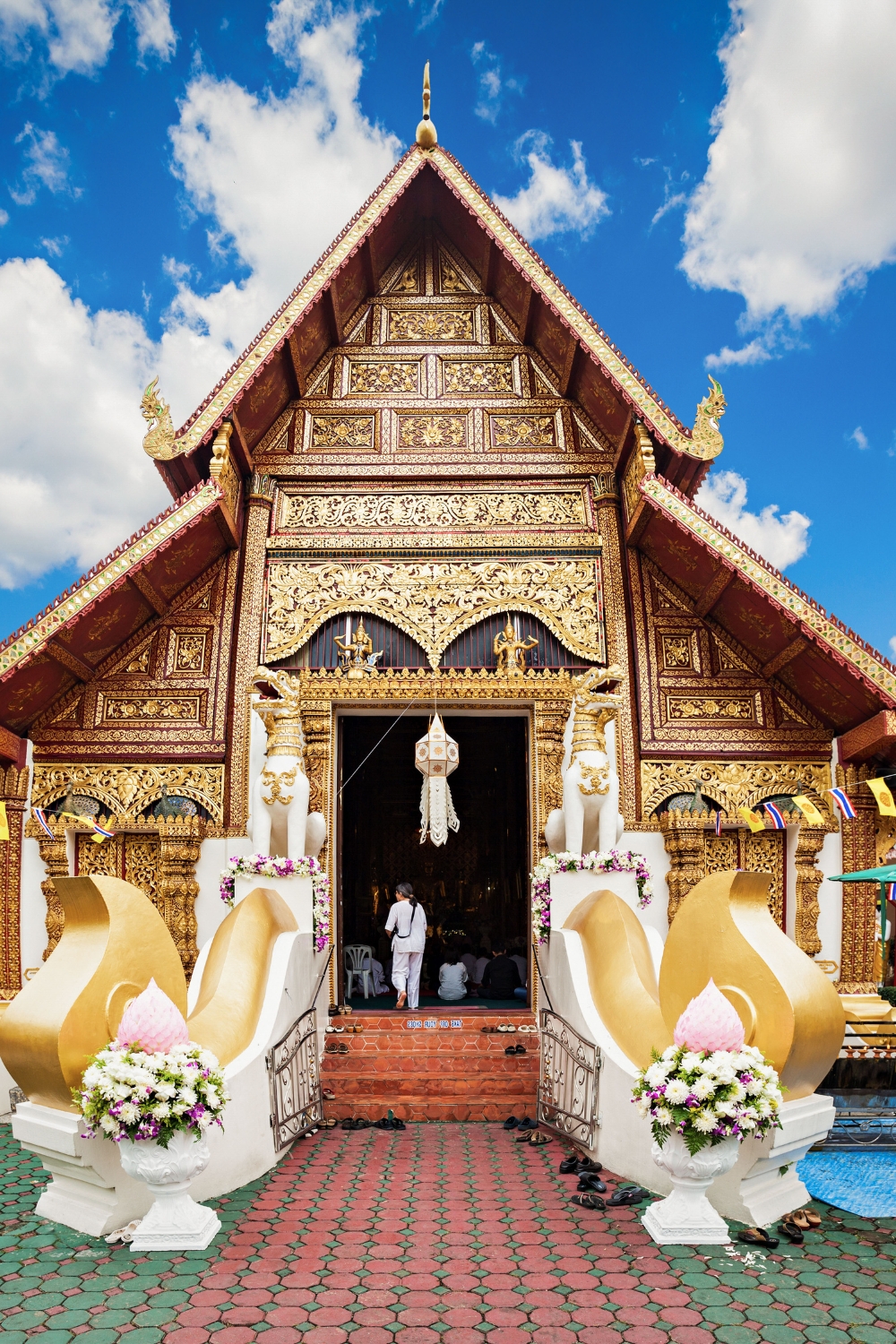
Wat Phra Singh ranks among Chiang Mai’s most important temples, housing the revered Phra Singh Buddha image and showcasing the finest examples of classical Lanna architecture. Built in 1345, this temple complex represents the pinnacle of Northern Thai artistic achievement.
Sacred Buddha Image and Religious Importance
The temple’s main attraction is the Phra Singh Buddha image, a highly revered statue that gives the temple its name. This sacred image plays a central role in Chiang Mai’s Songkran (water festival) celebrations when it’s paraded through the city streets.
The Wihan Lai Kham (assembly hall) contains some of Thailand’s most beautiful murals, depicting scenes from Buddhist stories and local Lanna life. These 19th-century paintings provide insight into historical Northern Thai culture and artistic traditions.
Architectural Excellence and Artistic Heritage
The temple’s buildings represent classic Lanna architectural style with multi-tiered roofs, intricate wood carvings, and gold-decorated facades. The main ordination hall features elaborate decorations and houses important religious ceremonies.
Daily temple activities include morning and evening chanting sessions that visitors can observe respectfully. The temple school and monk quarters show the continuing role of temples in Thai education and community life.
Built: 1345
Main attraction: Phra Singh Buddha image
Artistic highlight: Wihan Lai Kham murals
Architectural style: Classic Lanna
9. Chiang Mai University and Surrounding Area – Modern Cultural Hub
Chiang Mai University area represents the city’s modern, cosmopolitan side while maintaining connections to traditional culture. This vibrant neighborhood offers excellent restaurants, trendy cafes, art galleries, and nightlife venues popular with students, expats, and travelers.
Educational and Cultural Center
Founded in 1964, Chiang Mai University serves as Northern Thailand’s premier educational institution. The campus features beautiful gardens, modern architecture, and an art museum that showcases contemporary Thai and international artists.
The surrounding Nimman Road (Nimmanhaemin) has evolved into Chiang Mai’s trendiest district, filled with boutique hotels, international restaurants, craft beer bars, and designer shops. This area attracts young Thais, international students, and modern travelers.
Dining and Entertainment Hub
The university area offers Chiang Mai’s most diverse dining scene, from street food stalls serving authentic Northern Thai dishes to upscale restaurants featuring international cuisine. Rooftop bars provide views over the city and mountains.
Art galleries, live music venues, and cultural spaces create a dynamic nightlife scene different from the traditional tourist areas. Weekend markets and festivals regularly showcase student creativity and local culture.
Key area: Nimman Road (Nimmanhaemin)
Atmosphere: Modern, trendy, international
Best for: Dining, nightlife, shopping, art
Visitors: Students, expats, modern travelers
10. Thai Cooking Classes – Culinary Cultural Immersion
Chiang Mai has earned recognition as one of Asia’s premier destinations for authentic Thai cooking classes. These hands-on experiences teach traditional Northern Thai recipes while providing insight into local ingredients, cooking techniques, and food culture.
Market Tours and Ingredient Education
Most cooking classes begin with guided market tours where participants learn to identify Thai herbs, spices, vegetables, and other essential ingredients. These market visits provide cultural immersion and practical knowledge about Thai cooking fundamentals.
Instructors explain the differences between Northern Thai cuisine and other regional Thai styles, highlighting unique dishes like khao soi (curry noodles), larb (meat salad), and som tam (papaya salad). The market experience connects cooking with local daily life.
Hands-On Cooking and Recipe Learning
Classes typically include preparation of 4-6 traditional dishes, from appetizers and salads to curries and desserts. Participants work at individual cooking stations, ensuring everyone gets hands-on experience with each recipe.
Professional instructors provide techniques for paste grinding, wok cooking, and flavor balancing that home cooks can replicate. Recipe booklets allow participants to recreate dishes at home, extending the cultural experience beyond their Thailand visit.
Class duration: Half-day or full-day options
Typical dishes: 4-6 traditional recipes
Includes: Market tour, hands-on cooking, recipe booklet
Best for: All skill levels, cultural immersion
Planning Your Chiang Mai Adventure
Getting Around the City
Chiang Mai’s compact size makes it easy to explore multiple attractions in a single day. The Old City area is perfectly walkable, while red songthaews (shared taxis) provide inexpensive transportation to farther destinations. Renting a scooter offers maximum flexibility for adventurous travelers comfortable with Thai traffic.
For day trips to attractions like Doi Inthanon or Elephant Nature Park, organized tours include transportation and guides. Tuk-tuks work well for short distances but negotiate prices before departing.
Best Time to Visit Different Attractions
Cool Season (November-February): Perfect weather for all activities, including mountain visits and temple exploration. This peak season brings crowds but ideal conditions.
Hot Season (March-May): Good for indoor activities like cooking classes and temple visits during early morning or late afternoon. Mountain destinations offer cooler temperatures.
Rainy Season (June-October): Fewer crowds and lush landscapes, though some outdoor activities may be limited. Waterfalls are at their most impressive during this period.
Cultural Etiquette and Temple Visits
Dress respectfully when visiting temples: cover shoulders and knees, remove shoes before entering buildings, and maintain quiet, respectful behavior. Many temples welcome visitors but remember these are active religious sites.
Photography is usually permitted in temple grounds but ask before photographing people, especially monks. Some temple buildings prohibit photography, so watch for signs or ask permission.
Conclusion
Chiang Mai offers an incredible diversity of experiences that showcase the best of Northern Thai culture, natural beauty, and spiritual heritage. From the golden spires of Doi Suthep Temple overlooking the city to the unique limestone formations of the Sticky Waterfalls, from bustling night markets to peaceful temple courtyards, each destination reveals different facets of this captivating region.
These ten must-visit places represent just the beginning of what Chiang Mai has to offer. The city’s greatest strength lies in its ability to provide both cultural depth and natural beauty, spiritual experiences and adventurous activities, traditional authenticity and modern comfort.
Whether you spend a few days or several weeks in Chiang Mai, the city’s relaxed pace and welcoming atmosphere encourage deeper exploration and cultural connection. The combination of affordable costs, excellent food, friendly locals, and diverse attractions makes Chiang Mai an ideal destination for first-time visitors to Southeast Asia and experienced travelers alike.
Start planning your Chiang Mai adventure today, and prepare to discover why this northern Thai city has captured the hearts of travelers from around the world. The Rose of the North awaits with its temples, mountains, markets, and countless opportunities for unforgettable experiences.
